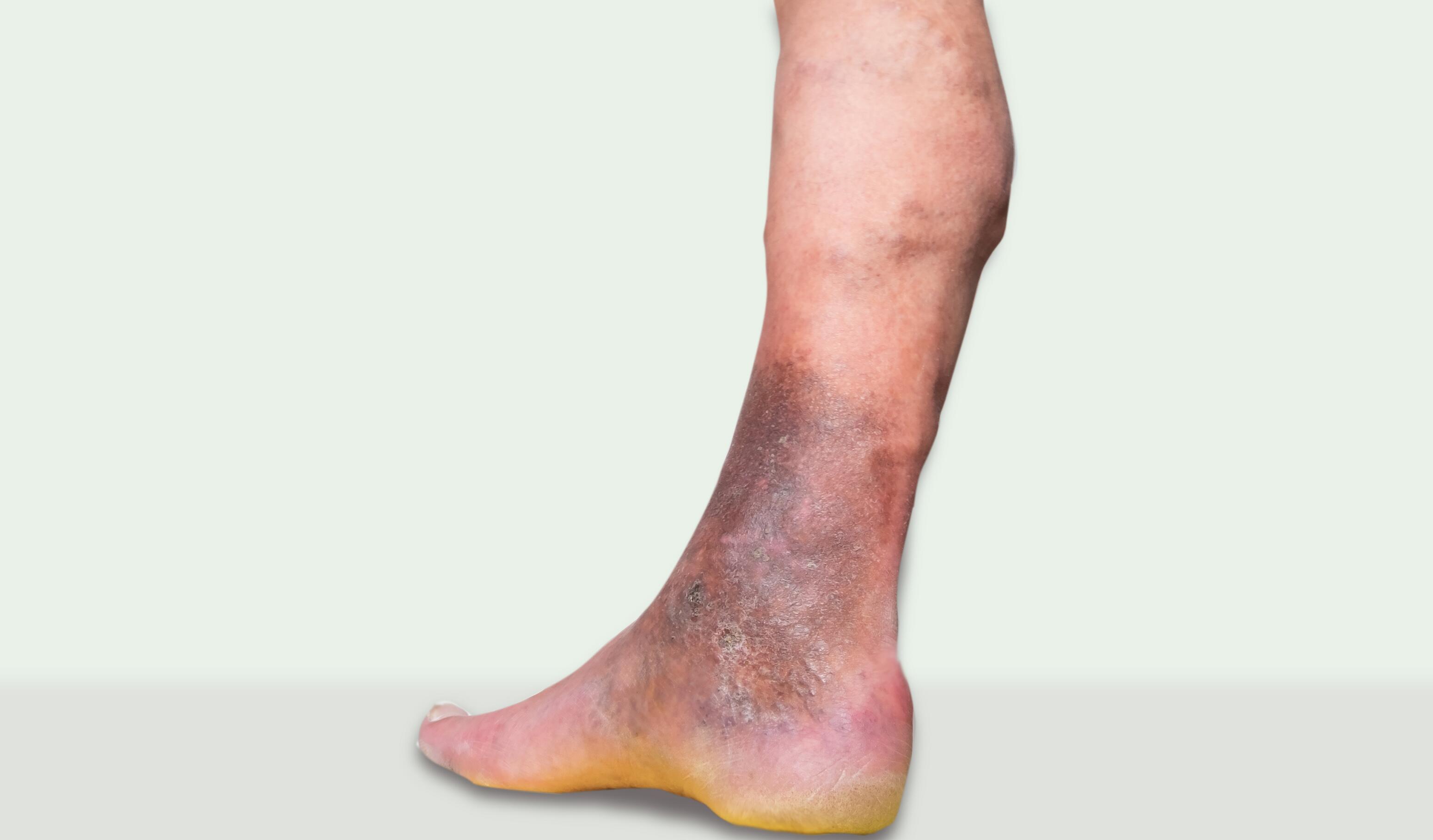- Your skin
-
Our products
Do you know well atopic dermatitis ?
DEXERYL supports you and take care of your dry skin each day
-
CLINICAL RESULTS
- About dexeryl
Comprehensive insights on varicose and leg eczema: causes, symptoms, most effective treatments, and prevention strategies for healthy skin

Summary
Varicose eczema, a chronic inflammatory condition of the skin, shares similarities with atopic dermatitis but distinguishes itself by primarily targeting the legs of older adults. Its root cause is often chronic venous insufficiency, reaching stage C4 in the classification system utilized by vascular specialists.
This condition is increasingly common as individuals age, with a higher prevalence among women. It can markedly affect one's quality of life, leading to various challenges, including:
Varicose eczema and its underlying condition, chronic venous insufficiency, primarily stem from the malfunctioning of venous valves. This malfunction is often an intrinsic condition rooted in the individual’s physiology. Less frequently, leg trauma or deep vein thrombosis (also known as phlebitis) can trigger varicose eczema.
This inefficiency in the venous system causes venous hypertension, which then precipitates notable changes in the skin and subcutaneous tissues. Specifically, the dysfunction causes the endothelial cells—those lining the inside of blood vessels—to become permeable. This allows red blood cells and various molecules to seep into the surrounding tissues, leading to the symptoms associated with varicose eczema.
Venous hypertension triggers an accumulation of white blood cells (leukocytes) within the microcirculation of the legs. These leukocytes begin to adhere to the surfaces of veins and valves, instigating the destruction of endothelial cells, muscle cells, and the structural integrity of the vein walls themselves. This destructive process significantly impairs the walls and valves, culminating in venous insufficiency.
Furthermore, the condition is exacerbated by the excessive buildup of iron, a byproduct of red blood cells, within the subcutaneous tissues. This, combined with the presence of pro-inflammatory immune cells, incites inflammation, directly contributing to the symptoms of varicose eczema.

Varicose eczema typically presents as eczema patches on the legs, most often affecting the inner side of the ankles. The symptoms can extend from the foot up to the knee, but characteristically, they do not affect the thigh area.
The patches are associated with itching, skin dryness, redness, scales, colour changes (hyperpigmentation), thickness of the skin (lichenification), inflammation, and sores. Itching can lead to scratching, resulting in superinfections.

Acute varicose eczema is characterised by acute swelling, pain, significant patches and redness, blisters, weeping, and vesicles.
Chronic varicose eczema typically presents with hyperpigmentation, redness, and poorly defined eczema patches. Patients with chronic varicose eczema may experience acute flare-ups characterised by worsening eczema symptoms.
With compromised skin integrity, individuals with varicose eczema are particularly vulnerable to superficial bacterial infections, most often streptococcus (erysipelas) or deep infections (cellulitis).
Venous ulcers are chronic wounds at the ankles that heal with difficulty and require special care.
Lipodermatosclerosis is the result of chronic inflammation and fibrosis of the subcutaneous tissues. It leads to the thickening and hardening of the skin of the legs, which is associated with brownish pigmentation.
Diagnosing varicose eczema begins with an in-depth review of the patient’s medical history. Factors that increase risk include being over the age of 50, female gender, history of pregnancy, obesity, experiencing contact dermatitis, extended periods of sitting or standing, cardiovascular and renal diseases, previous phlebitis, a family history of similar conditions, and leg injuries.
During the physical examination, a healthcare professional will inspect the skin for signs indicative of varicose eczema. These include swelling of the legs, visible varicose veins, signs of previous phlebitis, or other venous disorders.
If the diagnosis remains uncertain, further tests may be warranted:
Effective management of leg and varicose eczema involves a multifaceted approach that addresses the underlying venous disease, the eczema lesions, and any ulcers that may have formed.
For mild cases of varicose eczema, lifestyle adjustments such as increased exercise, walking, and elevating the legs may provide some relief.
However, compression therapy stands as the cornerstone treatment, significantly reducing venous hypertension and the symptoms of eczema. Utilizing bandages or specially designed compression stockings helps manage and reduce the symptoms by improving blood flow.
Zinc Oxide or Corticosteroid Bandages are specifically treated to deliver compression while simultaneously addressing the inflammation and itching associated with eczema.
Maintaining the health of the skin is crucial in the treatment of varicose eczema:
Beyond topical treatments, several options are available to tackle varicose eczema from different angles:
Preventing varicose eczema centers on the proactive management of modifiable risk factors. These include obesity, a sedentary lifestyle, extended periods in fixed positions, pre-existing contact eczema, and cardio-renal diseases.
Implementing key daily practices and lifestyle adjustments plays a crucial role in prevention:
Adopting a gentle daily hygiene routine is crucial for maintaining skin health:

After washing and while your skin is still slightly damp, apply emollient creams to lock in moisture. Choose creams that are free from fragrances and parabens to reduce the risk of contact eczema.
Regular medical monitoring allows for the prompt treatment of any venous insufficiency and the implementation of tailored prevention strategies.
References:
1. Yosipovitch G, Nedorost ST, Silverberg JI, Friedman AJ, Canosa JM, Cha A. Stasis Dermatitis: An Overview of Its Clinical Presentation, Pathogenesis, and Management. Am J Clin Dermatol. 2023 Mar;24(2):275-286.
2. Wollenberg A and al. European guideline (EuroGuiDerm) on atopic eczema - part II: non-systemic treatments and treatment recommendations for special AE patient populations. J Eur Acad Dermatol Venereol. 2022 Nov;36(11):1904-1926.